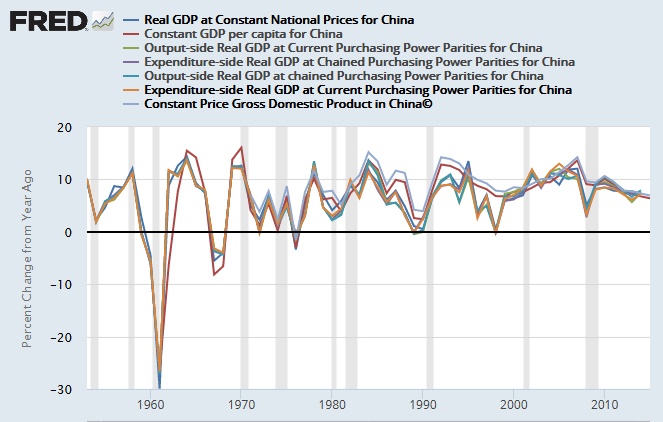There’s some debate on how reliable the GDP growth rates from China are. In part, this worry comes from the pre-reform era in which all levels of production had to reach targets and may not have been entirely truthful. Also, the string of very high growth rates over the past two decades is unprecedented. Can FRED shed some light?
Well, it has seven different series that measure GDP in different ways. One is from the World Bank, one is from the OECD, and five are from the Penn World Tables. Differences pertain to how currency conversions are treated. For example, there’s the issue that exchange rates may drift away from so-called purchasing power parity (PPP) and which side of the GDP equation is used. Indeed, technically, there are three ways to measure GDP: add up all output, all expenditures, or all incomes. All three should get to the same number, but in practice there are some residual errors. So what does this graph show? These different measures essentially come to the same conclusions, the differences being relatively small and not systemically biased in one direction. However, these statistics are based on information that is coming out of China.

